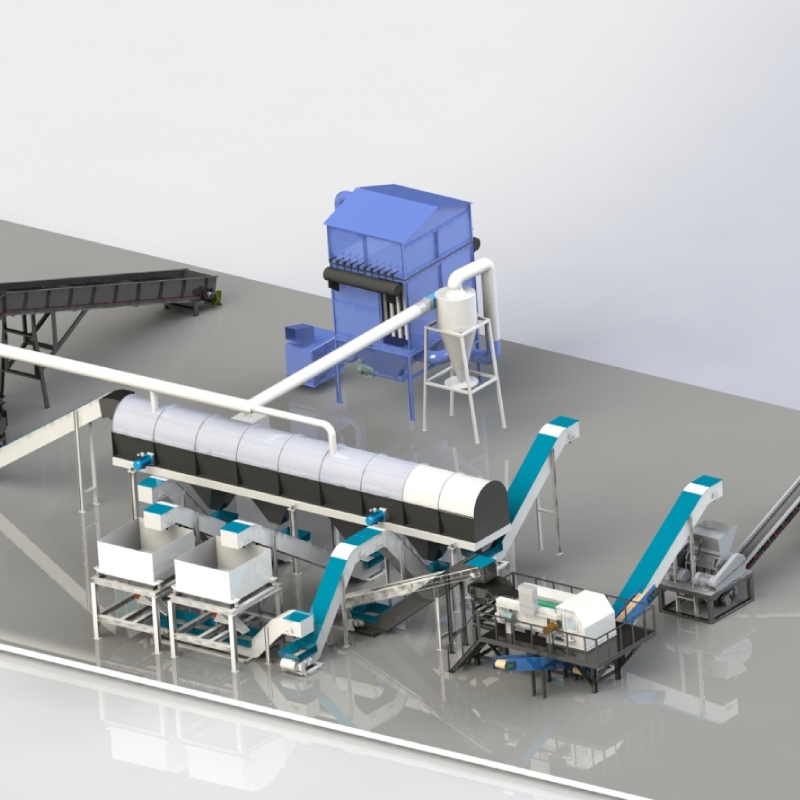Aluminium shredding has become an essential process in the modern recycling industry, offering significant benefits to manufacturers, environmentalists, and economies worldwide. Unlike general misconceptions, aluminium shredding is not merely about crushing cans. It represents a sophisticated procedure that involves meticulous processes, cutting-edge technology, and an intricate understanding of material properties. This in-depth examination will explore the multifaceted dimensions of aluminium shredding and how it stands as a beacon of innovation in the recycling sector.

The process of aluminium shredding involves breaking down large aluminium components into smaller, manageable pieces, facilitating easy melting and recycling. Shredders, the machines used in this process, play a critical role. These machines come equipped with blades and hammers designed specifically to handle the tough nature of aluminium. For instance, heavy-duty industrial shredders are capable of processing everything from beverage cans to large automobile parts, a testament to their adaptability and strength.
From the perspective of experience, operators engaged in aluminium shredding underscore the importance of routine maintenance and calibration of shredding machines. Lubrication of the moving parts, regular inspection of blades' integrity, and ensuring the hardware is free from any obstruction can optimize performance and longevity. It's not only about having the best tools but also knowing how to leverage these tools effectively. Operators often note that understanding the specific type of aluminium and its alloy compositions is crucial, as different alloys have varying resistances to shredding.

In terms of expertise, advancements in technology have brought about a range of sophisticated shredding machines equipped with AI and machine learning capabilities. These innovations enable precise control and monitoring of the shredding process, enhancing efficiency and safety. For example, sensor-driven shredders can adjust blade speed and torque according to the density and thickness of the material, ensuring consistent output and minimal wear on the machine. Additionally, shredding facilities are increasingly integrating real-time data analytics to monitor operational metrics and predict maintenance needs, thus reducing downtime and improving throughput.
Authoritativeness in the aluminium shredding domain is often demonstrated by leading organisations that set industry standards and guidelines. Institutes dedicated to metal recycling provide certification for shredding operators, establishing a benchmark for proficiency and safety. Companies renowned for their sustainable practices often collaborate with these institutes to ensure that their operations align with the best practices. Such collaborations progress not only the efficiency but also the safety protocols associated with aluminium shredding, advocating for reduced environmental impact and enhanced worker safety.
aluminium shredding
Trustworthiness, a crucial attribute, hinges on transparency and accountability within the shredding process. Facilities that hold themselves to high ethical standards regularly conduct audits and engage in third-party assessments to validate their processes. Providing clients and partners with detailed reports that outline the percentage of metal recovery and residual waste rates instills confidence. By adhering to international recycling and waste management regulations, these facilities demonstrate their commitment to environmental responsibility and public trust.
An often overlooked advantage of aluminium shredding is its profound impact on environmental sustainability. As shredded aluminium is easier to melt down, it significantly reduces the energy required compared to processing raw bauxite ore – the primary source of aluminium. The energy savings directly translate into reduced greenhouse gas emissions. Moreover, by promoting efficient recycling, shredding helps conserve natural resources and diminishes landfill use, paving the way for a greener planet.
In addition to environmental benefits, the economic ramifications of aluminium shredding are noteworthy.
The employment opportunities generated by shredding plants cannot be overstated. Skilled operators, engineers, logisticians, and quality control experts form the backbone of this industry, driving not only revenue but also technological innovations. As various sectors demand higher quality recycled aluminium, the need for specialized shredding techniques and equipment continues to spur advancements and investment in research and development.
In conclusion, aluminium shredding represents a remarkable confluence of technological innovation, environmental stewardship, and economic opportunity. By honing the expertise required for operating advanced shredding machinery and conforming to authoritative industry standards, the process doesn’t merely thrive on the tangible benefits. It also serves as a crucial pillar supporting the larger narrative of sustainable industrial practices. As industries across the globe increasingly prioritize recycling, aluminium shredding remains at the forefront, exemplifying how knowledgeable practice and modern technology can unite to foster a more sustainable world.


